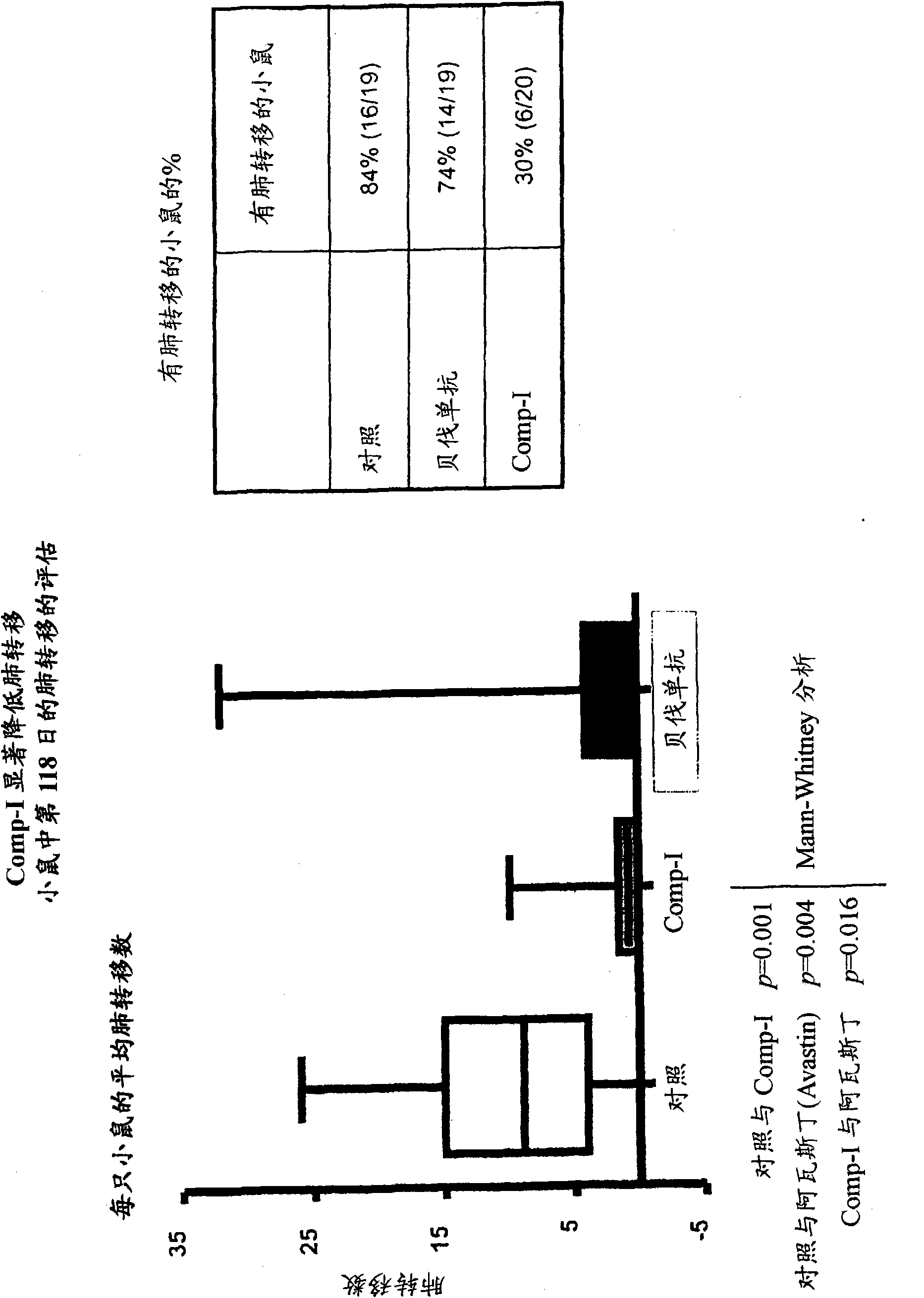Use of VEGFR-2 inhibitors for treating metastatic cancer
A technology of VEGFR-2 and inhibitor, which is applied in the field of VEFR-2 inhibitor for the treatment of metastatic cancer, can solve the problem that tumor spread to other tissues is not very effective.
- Summary
- Abstract
- Description
- Claims
- Application Information
AI Technical Summary
Problems solved by technology
Method used
Image
Examples
Embodiment approach
[0316] In some embodiments, it may be preferable to glycosylate the proteins used in the invention. Preferably, such proteins are fibronectin based scaffolds such as Adnectins TM . But Adnectins TM Typically no glycosylation sites are included, which can be engineered into the protein.
[0317] Glycosylation of proteins is usually either N-linked or O-linked. N-linked means that the carbohydrate moiety is attached to the side chain of an asparagine residue. The tripeptide sequences asparagine-X-serine and asparagine-X-threonine, where X is any amino acid except proline, are the recognition sequences for enzymatic attachment of the carbohydrate moiety to the asparagine side chain . These tripeptide sequences can be engineered into proteins of the invention, particularly fibronectin-based scaffolds such as Adnectins TM , and their corresponding polynucleotides. Thus, the presence of either of these tripeptide sequences in a polypeptide can potentially create a glycosylati...
Embodiment 1
[0382] Comp-I was significantly more active than bevacizumab in an orthotopic model of tumor metastasis. On day 0, human MDA-MB-231 breast cancer cells were implanted into mouse mammary fat pads (1×10 6 MDA-MB-231 breast cancer cells). The resulting tumor was resected on day 24 and treatment was started 4 days later (average tumor volume at resection was 400mm 3 ). The treatment groups were as follows: Control: PBS, Comp-I: 30 mg / kg, Bevacizumab 5 mg / kg (100 μL IP injection, twice a week). At sacrifice, the extent of local regrowth and the number of lung metastases were assessed. Comp-I produced fewer macroscopic metastases per mouse than bevacizumab. Furthermore, Comp-I had a significant effect on the incidence of metastasis in the study. Only 30% of Comp-I treated mice showed lung metastases compared to 74% of bevacizumab treated animals and 84% of controls (see figure 1 ).
PUM
| Property | Measurement | Unit |
|---|---|---|
| concentration | aaaaa | aaaaa |
Abstract
Description
Claims
Application Information
 Login to View More
Login to View More - R&D
- Intellectual Property
- Life Sciences
- Materials
- Tech Scout
- Unparalleled Data Quality
- Higher Quality Content
- 60% Fewer Hallucinations
Browse by: Latest US Patents, China's latest patents, Technical Efficacy Thesaurus, Application Domain, Technology Topic, Popular Technical Reports.
© 2025 PatSnap. All rights reserved.Legal|Privacy policy|Modern Slavery Act Transparency Statement|Sitemap|About US| Contact US: help@patsnap.com

